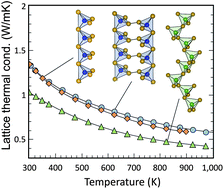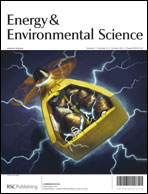Inspired by the promising thermoelectric properties in the Zintl compounds Ca3AlSb3 and Ca5Al2Sb6, we investigate here the closely related compound Sr3GaSb3. Although the crystal structure of Sr3GaSb3 contains infinite chains of corner-linked tetrahedra, in common with Ca3AlSb3 and Ca5Al2Sb6, it has twice as many atoms per unit cell (N = 56). This contributes to the exceptionally low lattice thermal conductivity (κL = 0.45 W m−1 K−1 at 1000 K) observed in Sr3GaSb3 samples synthesized for this study by ball milling followed by hot pressing. High temperature transport measurements reveal that Sr3GaSb3 is a nondegenerate semiconductor (consistent with Zintl charge-counting conventions) with relatively high p-type electronic mobility (∼30 cm2 V−1 s−1 at 300 K). Density functional calculations yield a band gap of ∼0.75 eV and predict a light valence band edge (∼0.5 me), in qualitative agreement with experiment. To rationally optimize the electronic transport properties of Sr3GaSb3 in accordance with a single band model, doping with Zn2+ on the Ga3+ site was used to increase the p-type carrier concentration. In optimally hole-doped Sr3Ga1−xZnxSb3 (x = 0.0 to 0.1), we demonstrate a maximum figure of merit of greater than 0.9 at 1000 K.

You have access to this article
 Please wait while we load your content...
Something went wrong. Try again?
Please wait while we load your content...
Something went wrong. Try again?


 Please wait while we load your content...
Please wait while we load your content...